
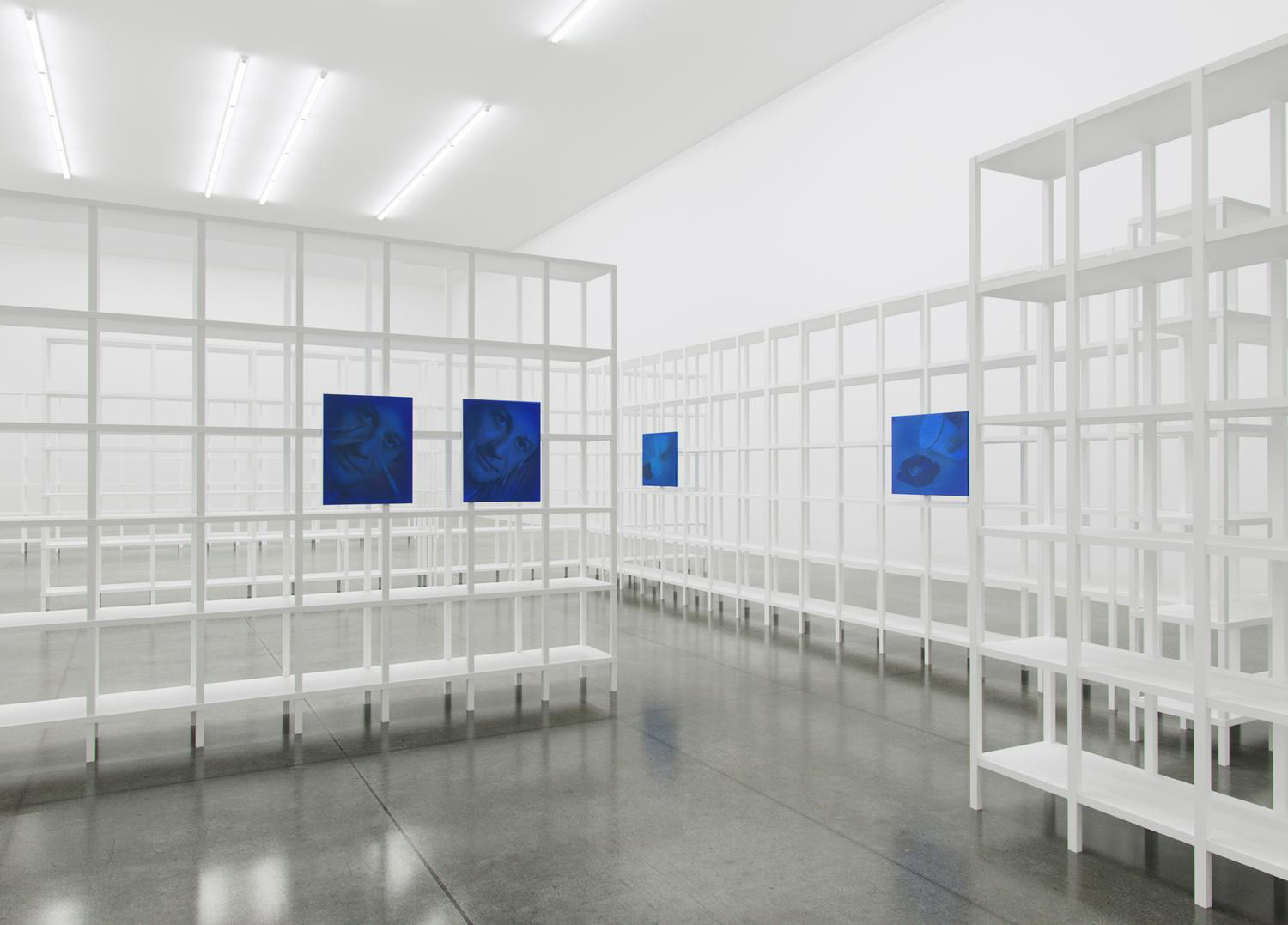
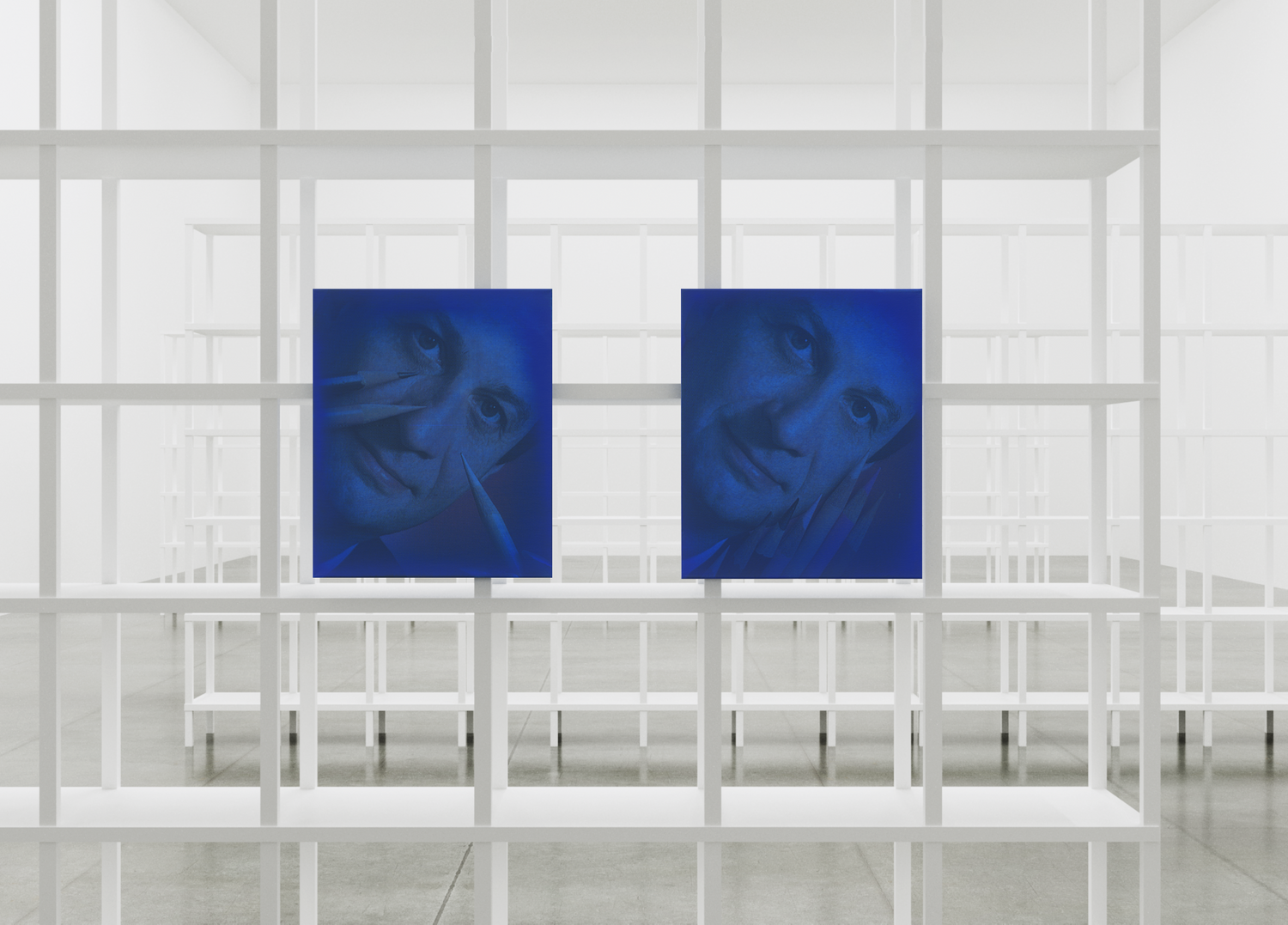
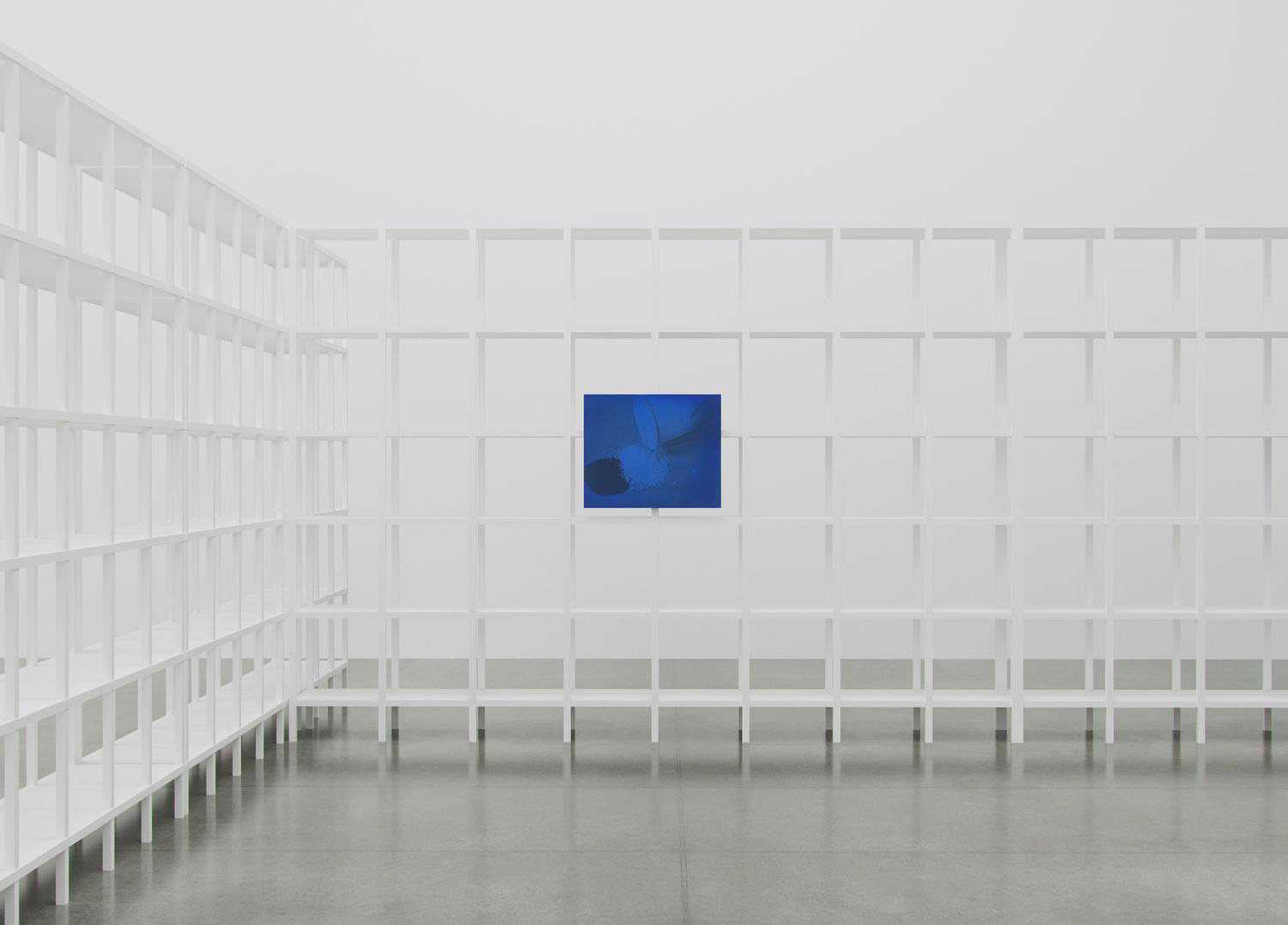
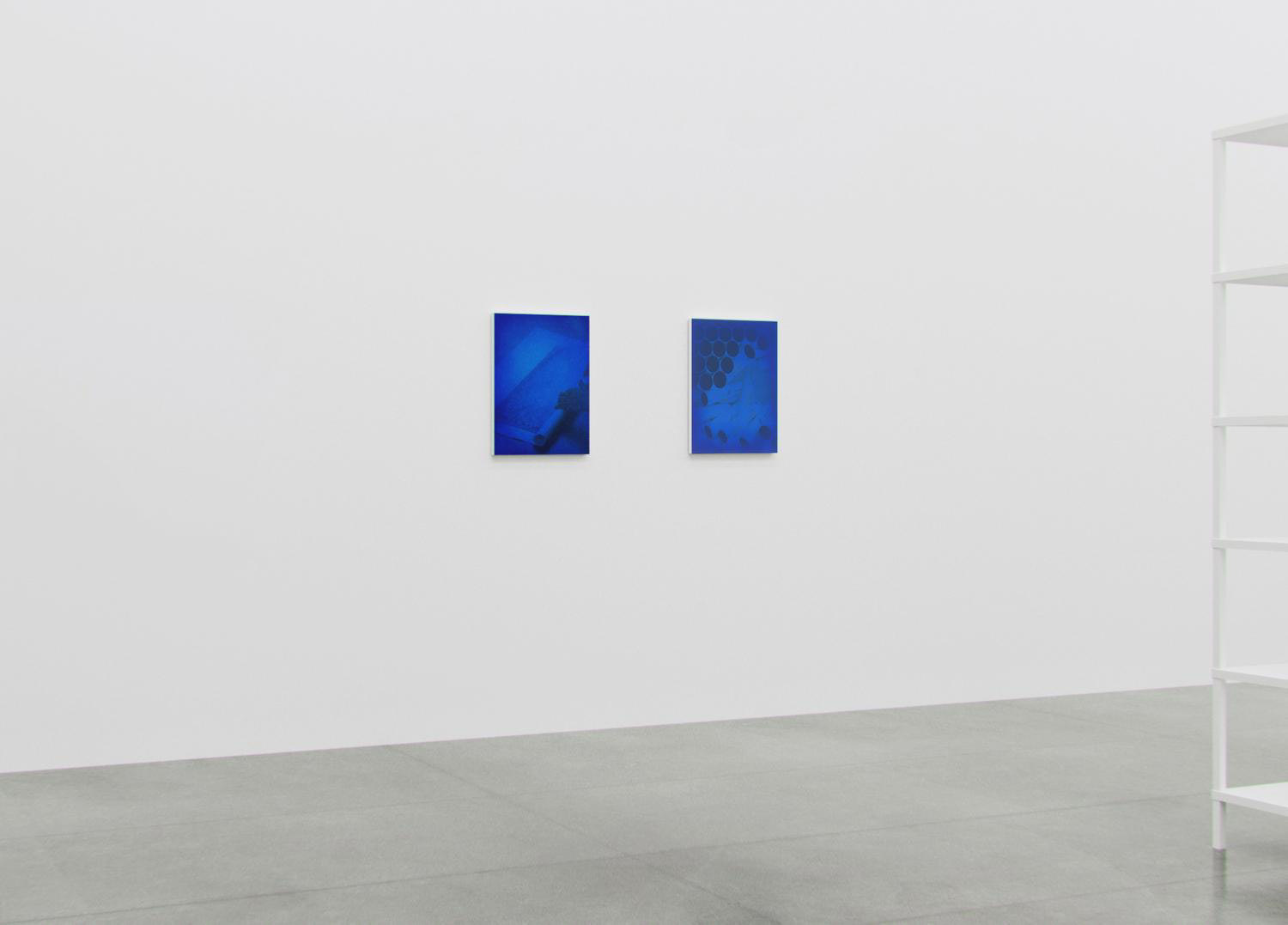


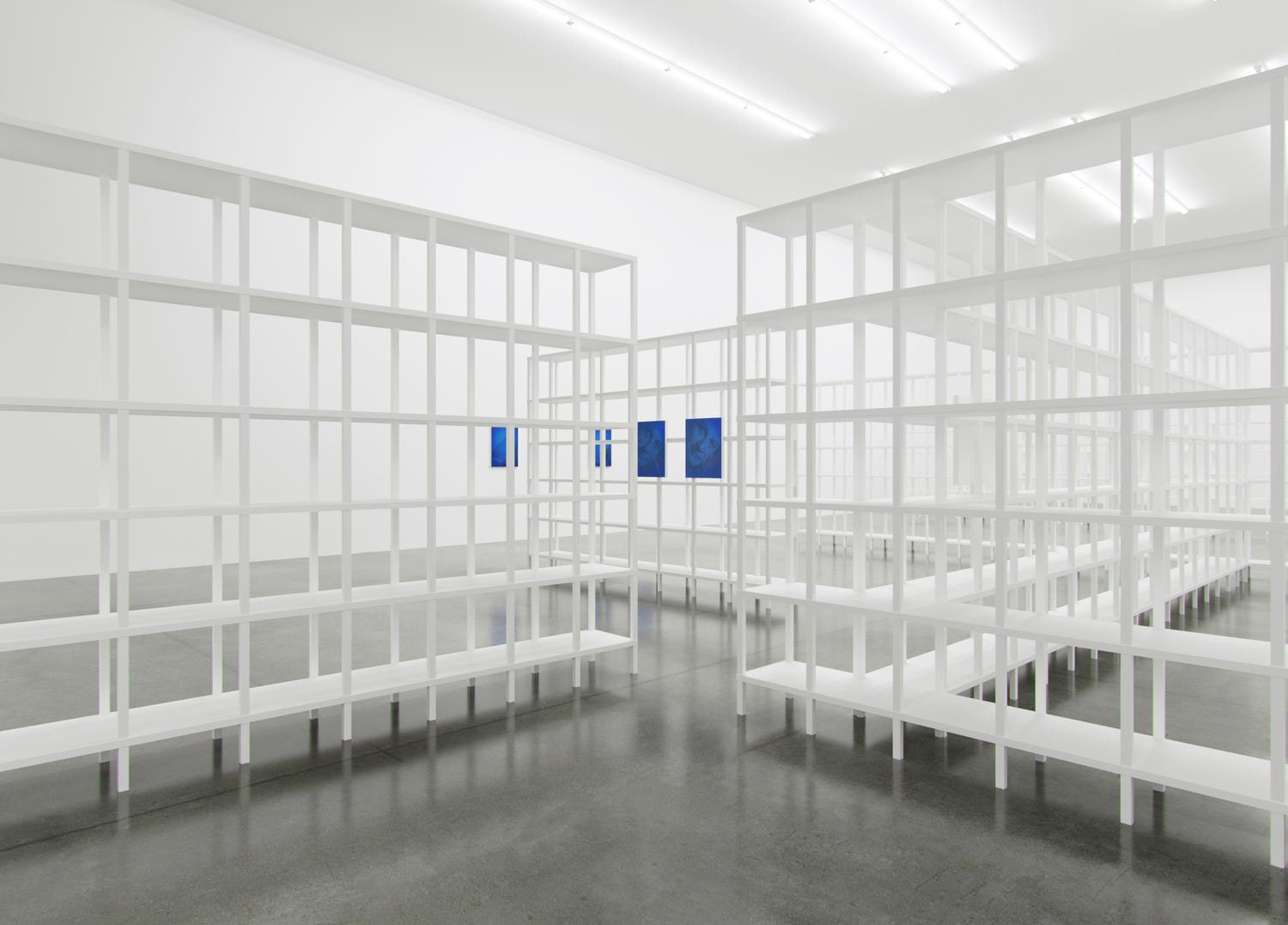
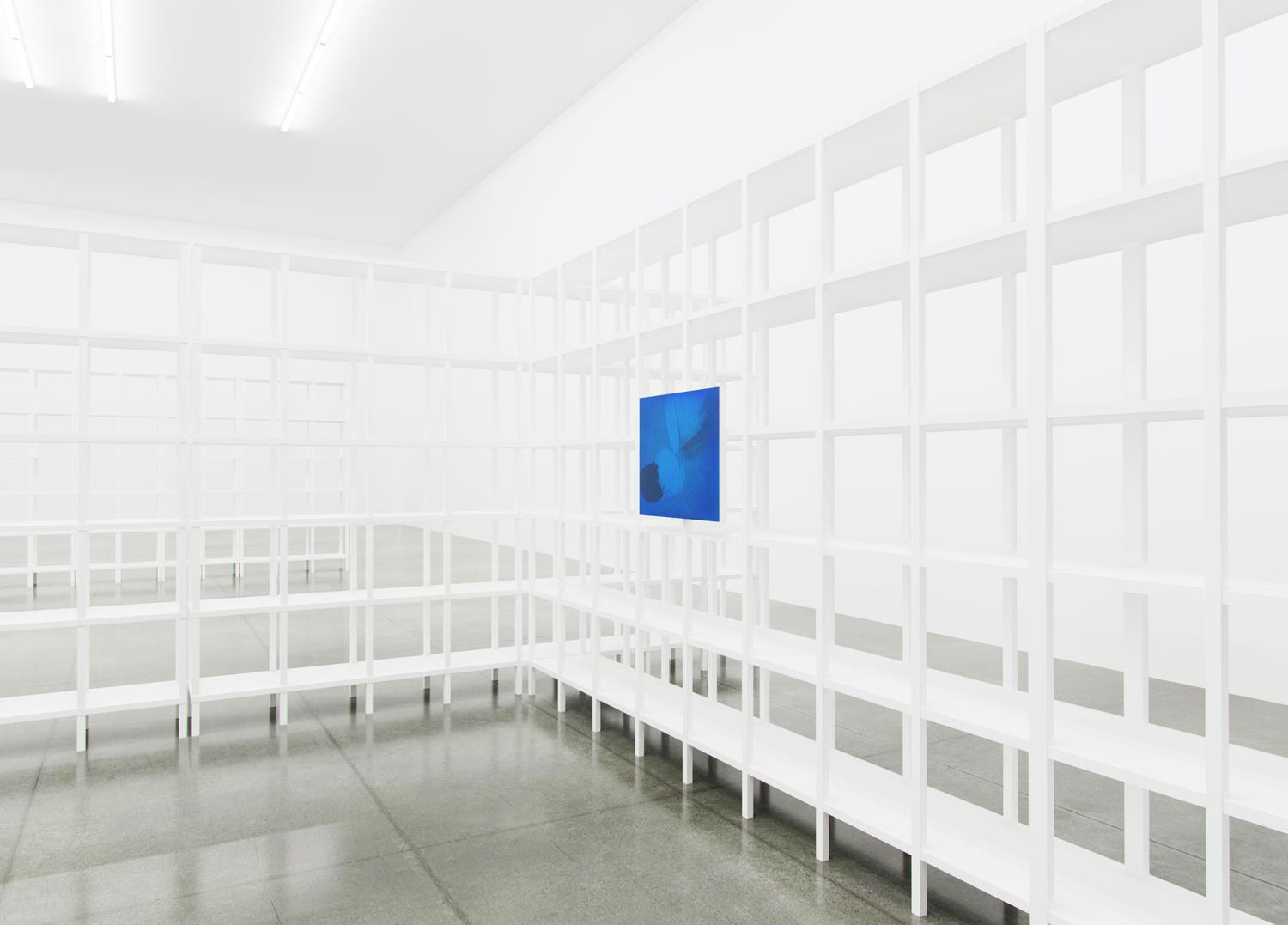
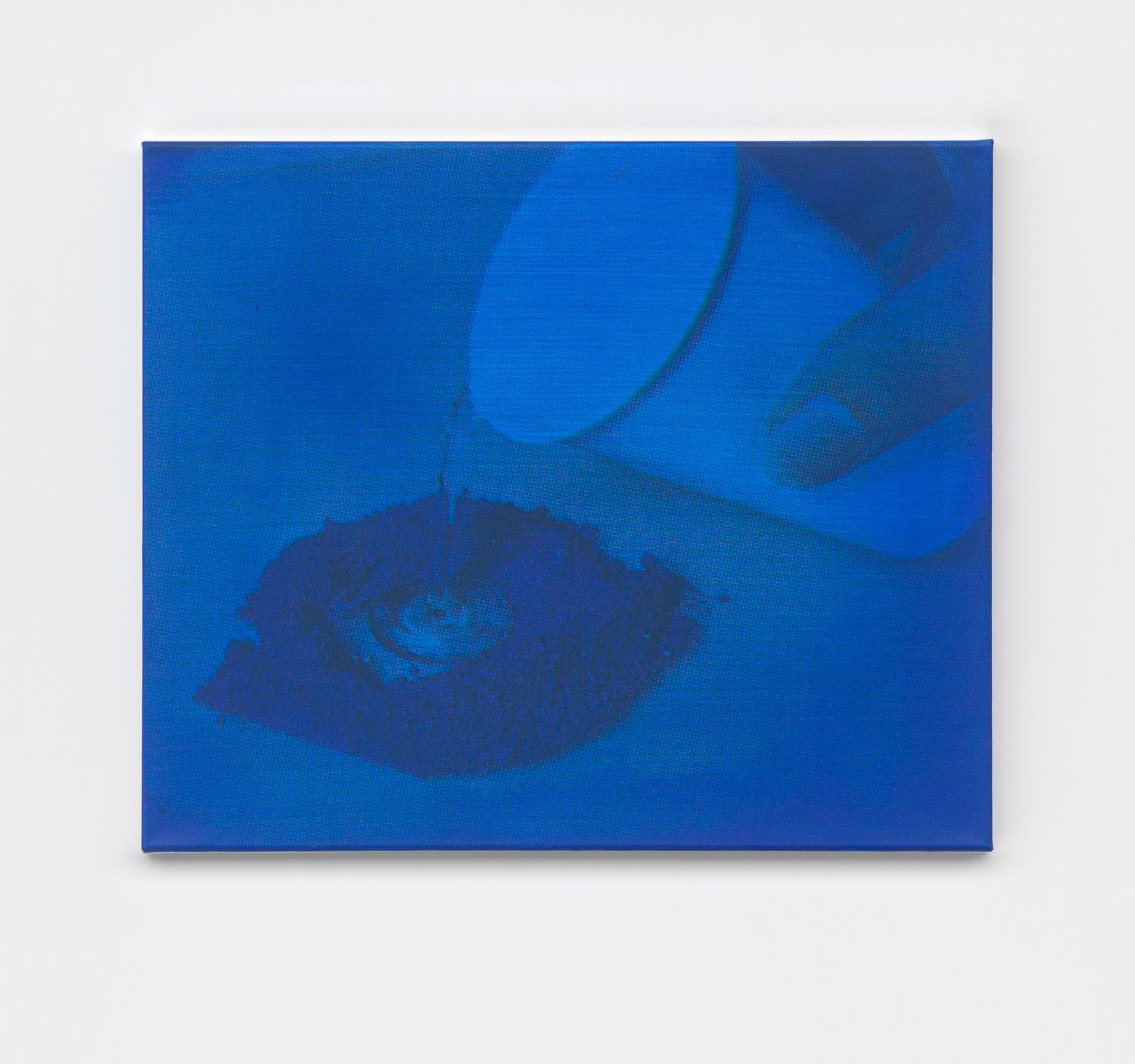

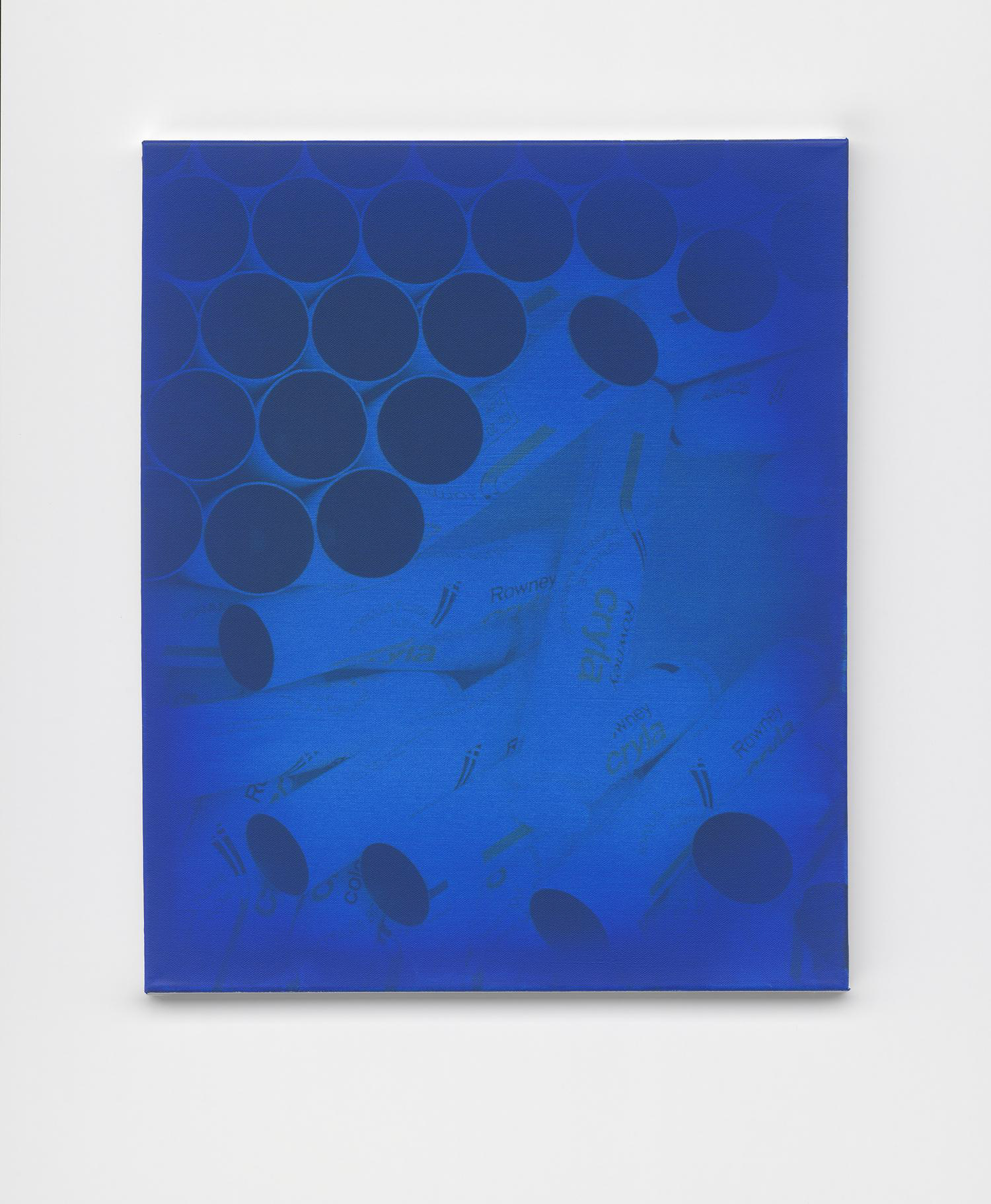
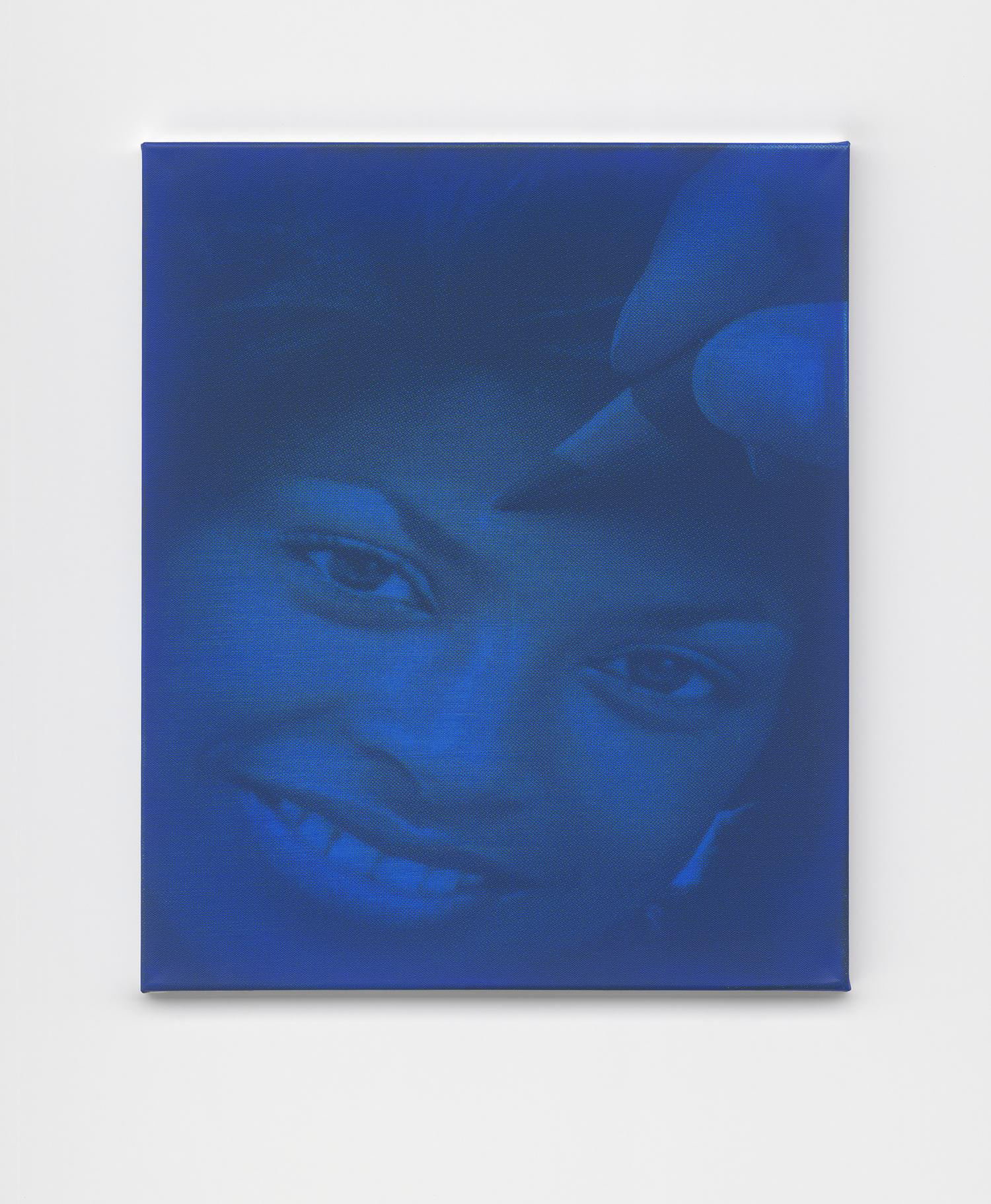
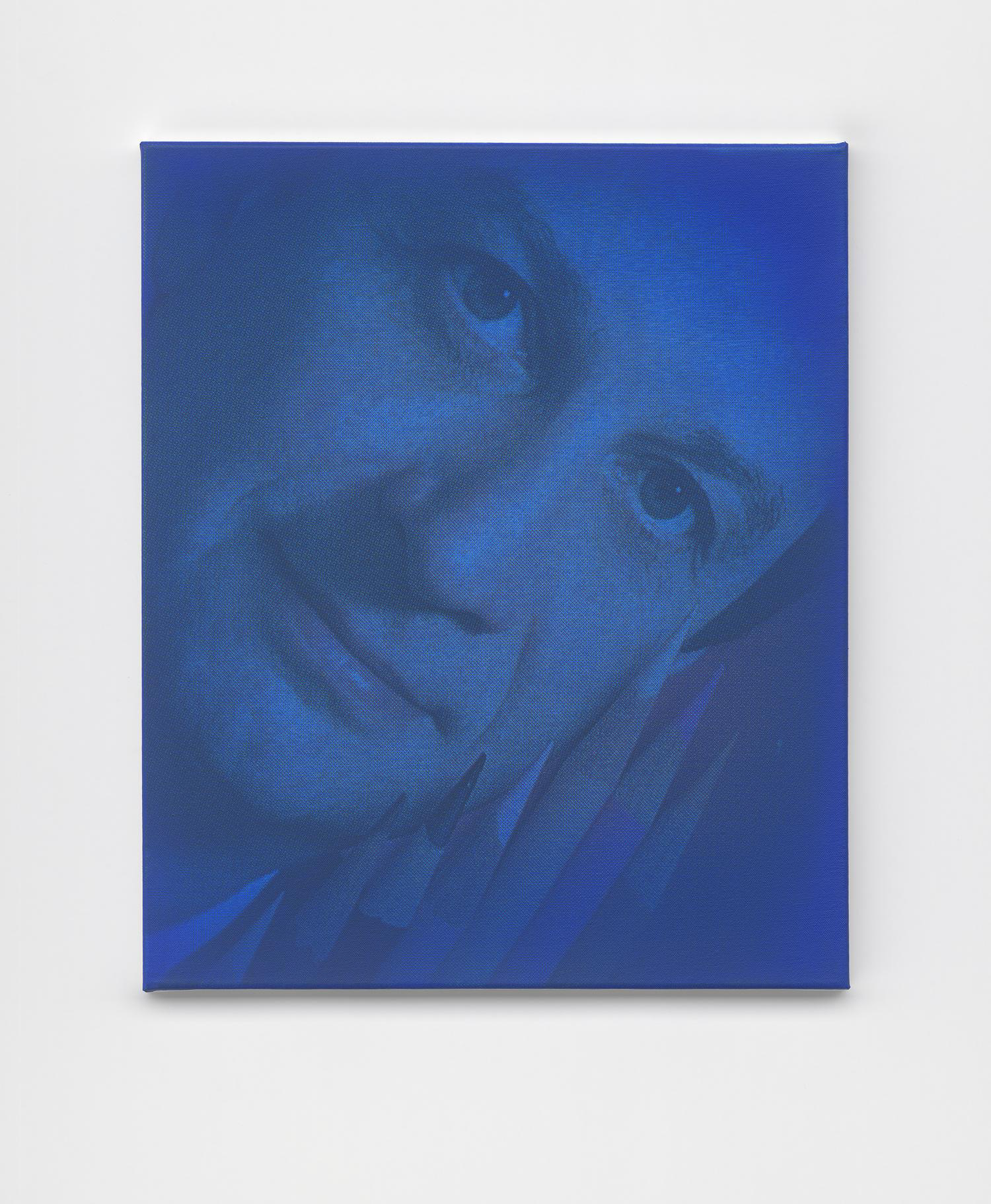
FORM 18 - 2024
Manor Grunewald
Re-painting class / Cobalt Blue
Manors Grunewald's works extend to painting, sculpture, and installation art. His primary focus is on printmaking, encompassing the imagery, materials, and technical approaches involved. Elements of archiving and installation, which interact with the environmental space, are also evident in his paintings.Together with him, we dedicated ourselves to creating a publication and a photographic documentation of his latest series of canvases, committing to intricately blend with his practice the definitions of space, staging, and representation. This collaboration aimed not only to document but also to explore the interplay between his artworks and the concepts of spatial arrangement and visual presentation.
Within the spectrum of blue, these artworks embody a dialogue between the materiality of pigment and the immateriality of concepts. One's gaze is drawn into the monochromatic depth, where the interplay of light and shadow on the human countenance suggests a contemplation of the self, not merely as a physical entity but as a vessel of thought, emotion, and the psychological interstices that dwell in between.In the second piece, we witness a convergence of fluidity and solidity; the pour of pigment into a form that captures a moment both fleeting and eternal. It confronts us with the question of permanence in art, and whether the work itself resides in the physical medium or the transient act of its creation.
The third canvas, with the unfurling blueprint, speaks to the planning of spaces, physical or conceptual, and the role of the artist's hand in delineating boundaries that both contain and liberate. The blueprint, while a symbol of intention and precision, here is subjected to the unpredictability of its interaction with the chosen hue, suggesting a nuanced conversation about control and surrender in the creative process. Each piece, singular in its focus yet harmonious in its chosen chromatic scale, invites a discourse on the essence of color as a psychological tool and a medium that transcends its own visual presence to evoke the unseen, the unspoken, and perhaps the optical effect.The blueness does not merely reside on the surface but delves into the depths of sensory perception and emotional resonance.The exhibition space, deliberately minimalist with white shelving structures, augments this sensory perception. These shelves, resembling an emptied archive, serve as both a physical framework and a conceptual backdrop, enhancing the visual impact of Grunewald's blue paintings. The stark whiteness of the shelves starkly contrasts with the depth of blue, creating a visual dialogue between absence and presence, emptiness and fullness. This setup not only showcases the paintings but also becomes an integral part of the narrative, a silent component of the work.It's as if the paintings are archived memories or thoughts, brought to life against a backdrop of stark simplicity.This intentional spatial design echoes the themes prevalent in Grunewald's work: the dichotomy between form and visual device, the tangible and the ethereal. The minimalist shelving becomes a metaphor for the mind's capacity to store and categorize experiences, yet the fluidity of the paintings suggests the ever-changing nature of memory and perception.
In this latest project, Grunewald invites us into a world where the boundaries of art and space blur, where the viewer is not just an observer but a participant in an ongoing dialogue between the photography, the art, and the environment. The white shelving, in its unobtrusive elegance, underscores the profound impact of simplicity in enhancing the complex layers of meaning inherent in the color blue and the art itself.